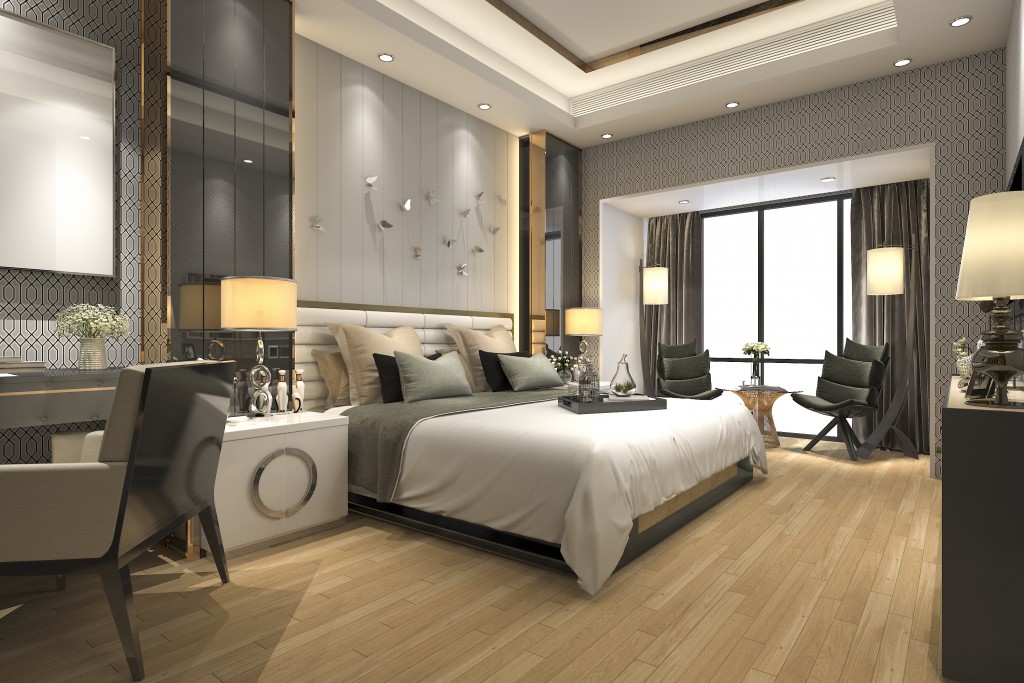Despite the economic impact of COVID-19, home remodeling projects still boomed. Clearly, many people valued their spaces and wanted them to look more stylish. Who would’ve thought a pandemic, of all things, was the one that motivated them to spruce up their homes?
Interior design companies felt the impact of the pandemic but not as much as other businesses. While they didn’t dodge the challenges, they quickly figured out how to overcome them. They also expressed some insight about the market and how the design will change after the pandemic.
In this article, we’ll take a look at the interior design lessons the pandemic taught us.
1. Color Is Coming Back
Before 2020, colors almost became taboo in interior design. Both clients and designers favored the neutral to monochromatic palettes. The most color we saw were earthen tones. Brighter colors, such as yellow, red, orange, and green, were muted and used as accents. But most inspirational homes didn’t bear those colors, even as accents.
We could attribute the falling popularity of colors to the emotions of people back then. Before the pandemic, people felt secure and stable. Although mental health issues were already rampant by then, people weren’t uncertain about the future, at least. Plus, neutral colors proved relaxing as opposed to bold and vibrant hues.
Now, colors are making a comeback in interior design, particularly those reminiscent of nature. Some bright colors are returning, too, because the emotions that stimulate them can battle unrest, grief, and anxiety. The neutral and monochromatic palettes aren’t going out of style yet, though. They’ve already proven themselves timeless. But people and designers are now more open to inviting colors into their spaces.
2. Underused Spaces Are Utilized
Most homes have at least one underused space. It typically serves as a storage room. Now, they’ve found a new purpose, thanks to the work-from-home setup.
Underused spaces have been converted into home offices. If not, they turned into luxurious entertainment rooms. Some built cocktail bars, home theaters, or craft rooms. Forgotten pool houses burst into life again. People who decided to get back in shape created home gyms. Wellness spaces, like yoga or meditation rooms, became popular as well.
The pandemic made many people realize that they didn’t necessarily need bigger spaces. They just needed to make the most out of what they already have.

3. Multipurpose Spaces Are Essential
Open-plan homes proved inefficient during the pandemic. They didn’t allow distraction-free Zoom calls. As a result, the “classic six” prewar apartment style may gain favor once more. It’s the type of home that uses retractable walls and pocket doors to divide spaces. They provide more privacy and allow people to stay isolated while they work.
Flexible rooms are also getting trendy. You’d see many spaces today acting as an office and a bedroom in one, for example. This trend may last long after the pandemic because being able to reconfigure a room anytime is a money-saver and an opportunity to practice creativity.
4. The Kitchen Is the Most Important Space
We’ve always regarded our kitchens as the heart of our homes. But we only used them during meal times or if we felt like cooking something. It wasn’t our favorite place unless we love to cook. But even so, we still preferred to stay cooped up in our rooms most of the time.
That changed during the pandemic, boredom pushing us to explore fun ways to use our kitchens. Many people started to bake or remodeled their kitchens. In remodeling projects, panel-ready appliances are commonly used. Refrigerators, dishwashers, and ovens no longer “float” awkwardly in the space. They became integrated with the cabinetry to reduce the space’s constraints. As a result, kitchen designs became more streamlined, and traffic improved.
The demand for walk-in pantries also increased. Many people realized that such pantries helped reduce kitchen clutter and made better use of the overall space. And speaking of better use of a space, back kitchens or prep kitchens saw a rise in popularity, too. They allowed people to keep their main kitchens clean since the heavy cooking was done in the hidden back or prep kitchen.
5. Design Should Encourage Wellness
Health consciousness rose during the pandemic. While it didn’t stop us from ordering fast-food deliveries, we also grew interested in healthier meals. After all, our best defense from the virus — before the vaccinations came — was a strong immune system. And home-cooked meals with fresh ingredients gave us that. So people also revamped their kitchens to encourage wellness, buying hydroponic growth appliances that let them raise herbs indoors.
These design lessons will likely stay with us even after the pandemic ends. They made us realize that our spaces have greater potentials than we thought. We can consider that a silver lining of the pandemic. The stay-at-home orders made us more resourceful and creative, and our homes became our canvas.




